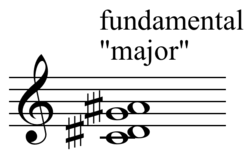DIY Quartertone Composition with 12 equal tools
Above is pictured a quartertone chord used by Charles Ives - a modern microtonal pioneer.
"Short Quartertone Study for Strings" is a demonstration with score on how anyone with a program that allows note input and a sound source (sampler, synthesizer) that allows overall tuning adjustment can start writing microtonal music today. The basic idea is to have two copies of your sound source with the same sound tuned a quartertone (50 cents) apart. If you can't figure out where the quartertone is in the tuning adjustment simply load two copies and on two separate midi channel place an A and a Bb and adjust the tuning until the two notes sound the same. Make note of where you started and where you ended the adjustment because the half-way point in 99.999% of the cases is a quartertone. Then, while it's weird to do at first, use the two scores to enter data for the one sound. In my score the top staff is unadjusted (i.e. normal) and the bottom staff is a quartertone sharp. So if you want an A quarter sharp you put an A on the bottom staff. If you want an A three quarter sharp you put a Bb on the bottom staff. If you want a regular A use the top staff. This method will work with practically any VSTi or Audio Unit and music composing program. More information about quartertone music can be found here on Wikipedia (Quarter tone) and here in this wiki (24edo).
The oddities seen in my score explained - the really low notes in measure 1 turns off vibrato and the very last stray note is to make sure Sonar captures the tail end of the reverberation of the real part of the score. That note was edited out of the final mp3.
Eric Ederer[1] adds: We might note that this can be done with two groups of acoustic (etc.) musicians, for instance by composition students who have access to small orchestras or ensemble players at school... half of them tune up 1/4 (and later, perhaps to other possibilities), everyone reads what they’re used to reading already and nobody gets hurt!
